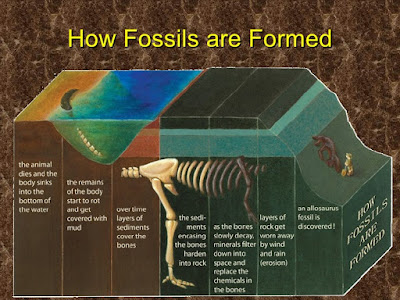- All sexually reproducing species have high genetic variation
- Traits are inherited from parents to offspring
- All species are capable of producing more offspring than the environment can support
- Competition is severe because of limited food and resources
Darwin's first conclusion stated that there are "winners and losers" as better traits leave more offspring. His second conclusion stated that the "winners" were the population because beneficial traits become more common. Darwin's ideas on natural selection were displayed in our Hunger Games Lab.
The gene pool was also discussed, as it is the total of all alleles in a population for one trait. Allele frequency is calculated by dividing the total number of one allele by the total number of all the alleles. If allele frequency has changed over time, that indicates that the population has evolved. Lethal alleles, if recessive, can be hidden in heterozygotes, yet beneficial if conditions change.
Speciation was also a major topic we learned about this unit. It is the process of 2 or more species evolving from one existing species. It is caused by reproductive isolation, either temporal(timing), behavioral(courtship/attraction), or geographical(physical barriers).
We also talked about how descendants of common ancestors have common traits. Embryology shows common ancestry. The patterns of speciation are as follows: Punctuated equilibrium, which occurs rapidly, or gradualism, which occurs slowly. Evo-devo is the study of the process of evolutionary development in multicellular organisms. Hox genes are relatively unchanged overtime(highly conservative), and they are responsible for turning on other genes during development. Vestigial structures are also known as evolutionary left-overs.

Fossils are formed in these four steps:
- Organism dies
- Organism is covered in ash, sediment, or clay
- Pressure and chemicals cause organism to become rock
- Hard parts fossilize better than soft parts(fossil bias)
Natural selection occurs in 3 ways:
- Directional selection-favors phenotype at one extreme
- Stabilizing selection-favors intermediate/medium phenotype
- Disruptive selection-favors phenotypes at both extremes
Genetic drift is when a random event drastically changes a population and its allele frequency changes as a result. After genetic drift, genetic variation decreases, making populations less resistant to change. Genetic drift changes allele frequency due to chance alone by this random event.
- Genetic Drift-random event drastically changes population
- Gene flow-move of alleles from one population to another
- Sexual Selection-traits that improve mating success chosen rather than for survival
- Natural selection-traits chosen advantageous for survival
As for my self growth, I feel as if I am more assertive and I am speaking up for myself more. I am no longer hesitant to ask for something, because now I know that the worst possible thing that can happen is for someone to say no. I feel like I am more assertive socially, but personally I feel like I can improve and be more assertive with myself. I need to start being more assertive with myself so I can get work done when I need to to avoid procrastination.
Works Cited
A., Jonathan. Evolution. Digital image. Study Blue. N.p., 24 Mar. 2015. Web. 11 Apr. 2017.
Gradualism vs. Punctuated Equilibria. Digital image. American Museum of Natural History. N.p., n.d. Web. 11 Apr. 2017. <http://www.amnh.org/learn/resources/images/evolution_W4E3_punctuated.jpg>.
How Fossils Are Formed. Digital image. In. N.p., n.d. Web. 11 Apr. 2017. <https://image.slidesharecdn.com/fossilsppt-120502044843-phpapp01/95/fossils-ppt-6-728.jpg?cb=1335934187>.


No comments:
Post a Comment